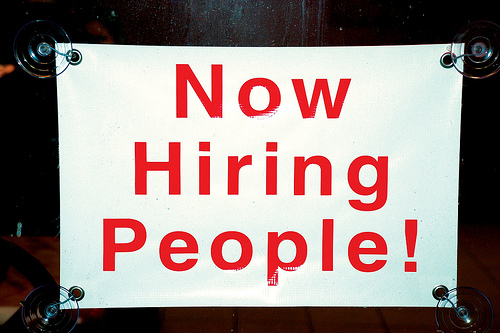Hiring is an aspect of running a business that’s an acquired skill; it’s one thing to have a tremendous idea and to create a terrific product, but it’s quite another to staff up and trust other people to carry out your vision for a company.
At Planet Tan, the successful tanning salon chain I founded, ran, and ultimately sold, our “peopling” program came down to four elements: attraction, acclimation, development, and care. All four elements can apply to any business, but they’re particularly useful for young entrepreneurs—who may not have a tremendous amount of experience with hiring and employee retention.
Attraction
Never stop recruiting talent. We wanted to always have a “virtual bench” of talent, so we always had a pipeline of prospective new hires. Of course, we also had created an ideal profile for each position within the company, so we knew exactly what to look for. I’m sure you’ve heard the “sales ABC” maxim: “Always be closing.” Planet Tan’s version of the phrase—as your should be—is “Always be interviewing.
As a growing company, we were constantly on the hunt for ideal talent, and who better to work for you than someone who’s already drinking the Kool-Aid: someone who knows the product, uses the product, and believes in the product? In other words, oftentimes our best employees started out as our best customers. Why not? They were already fans and had an insider perspective on the company. In fact, one of our very best team members started out as one of our top customers. Lori, from our Frisco, Texas, store, was a “raving fan” before joining the Planet Tan Team. She came to work for us and covered the morning shift, typically our slowest time. Still, by the following year’s end, Lori had become our top seller, sweeping all of our internal awards for sales and customer service. Do I really have to tell you why she was so successful?
Sixty percent of our new hires came from referrals and current members. We offered big bonuses for employee referrals, since that was a rich source of prospects. In addition, we were constantly advertising on the radio, on our website, and in stores to recruit new talent. The process never stopped, because we always wanted to have that bench strength we were looking for.
Acclimation
We referred to our process of getting our new employees up to speed quickly as our “on boarding” process. We developed ways to bring new hires on board and integrate them as quickly as possible by providing the tools, resources, and support to set them up for success. If you’ve shown up for a new job on day one and your employer didn’t have your office ready or your business cards printed, then you know how awkward and unwelcoming such unpreparedness can be. Always make sure that new team members feel welcome and acclimated immediately: We had their business cards waiting, along with a welcome card signed by their fellow employees. They were introduced to the culture and briefed on our team approach and company expectations. With proper acclimatization, our new team members could hit the ground running.
Development
Of course, once they were on board, new team members had to be developed. We approached team-member development with the idea that confidence would lead to competence, so we took learning and development of new hires seriously. I recommend using a buddy system in which each new employee has an advocate, that is, a person they could go to for questions and advice, who performs a similar role. When we used this system, it meant that each new team member had a manager and an advocate whom they could call on for help and support as they learned the ropes. With this strong support system in place, each new team member was set up for success from day one.
Care
One you find the best talent, you must retain them through differentiation. In other words, you need to provide different incentives and rewards based on performance, level of responsibility, and tenure. Our “care” philosophy was based on the fact that the best people should get the best opportunities.
We were a performance-based culture that rewarded results and recognized value, and we made sure that our best talent knew that they had plenty of what we called “runway opportunities,” or opportunities for growth within the company, in front of them. Leaders should be groomed to grow into bigger roles within the company, and your top performers should be given lots of room for growth and success. The team members who became leaders were those who understood that they had to invest in themselves and continue to grow. As a business, we understood that the future of the company depended on filling the pipeline with future leaders and preparing them for the position they would occupy in the future.
By Tony Hartl Author, Selling Sunshine – 75 Tips, Tools and Tactics for Becoming a Wildly Successful Entrepreneur.

